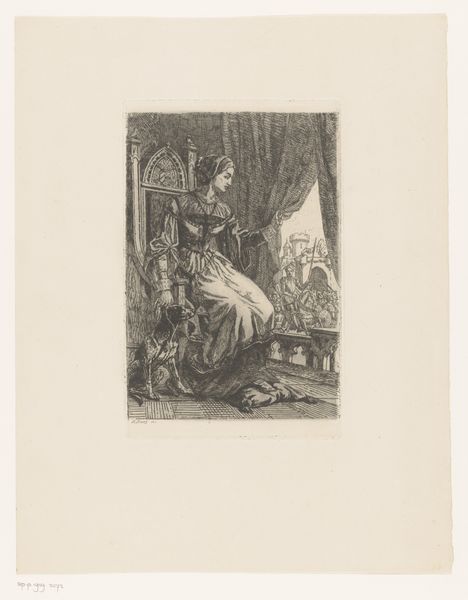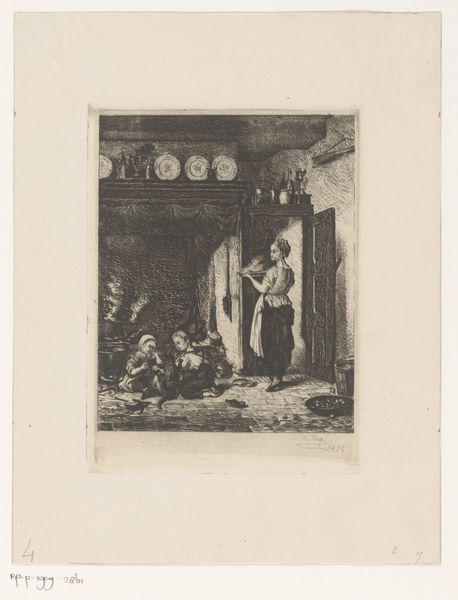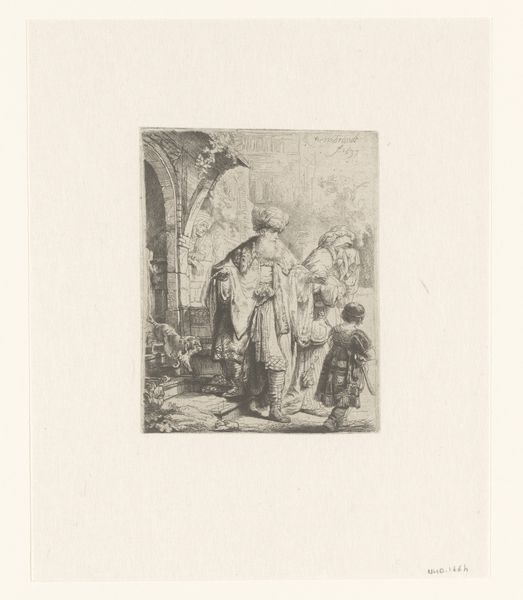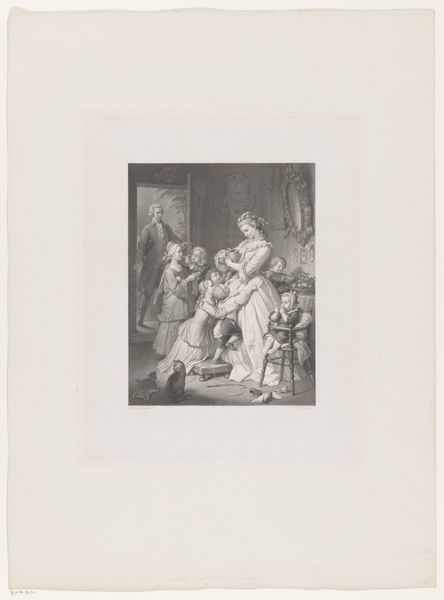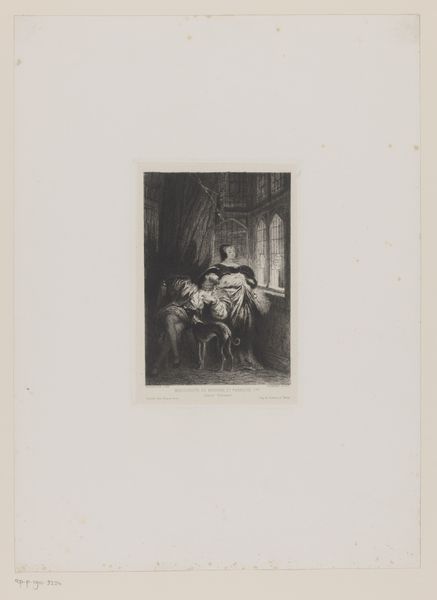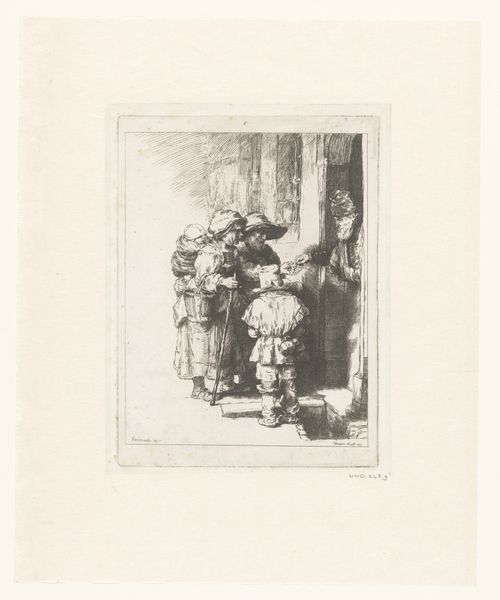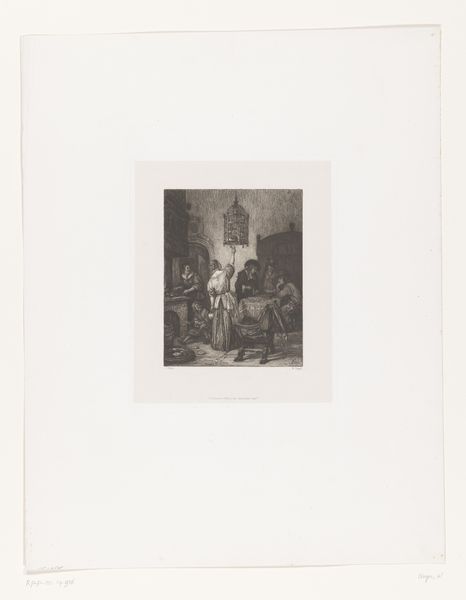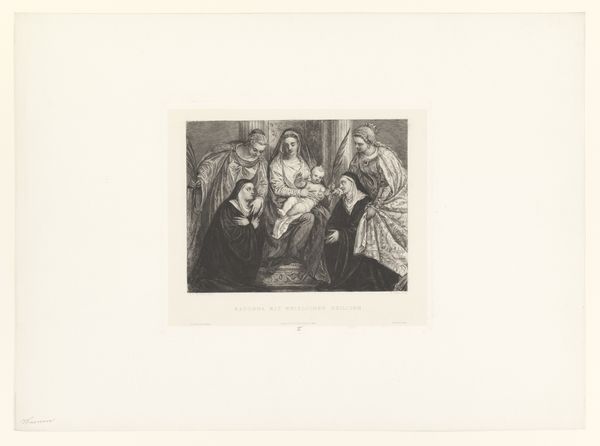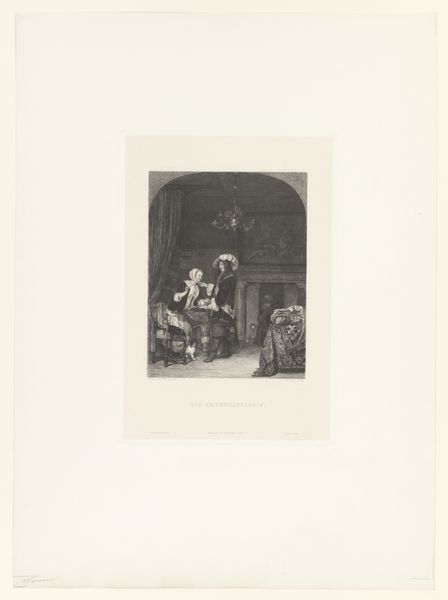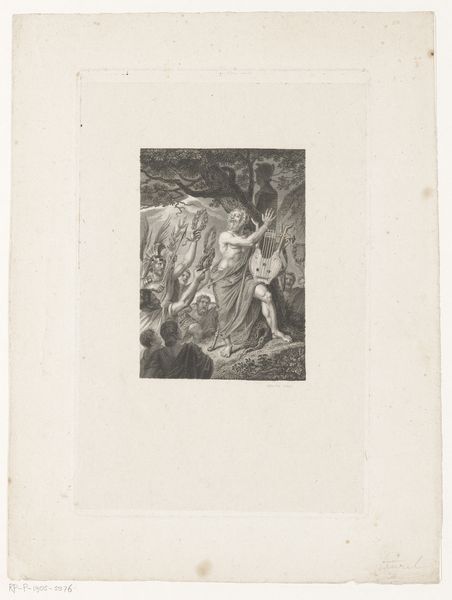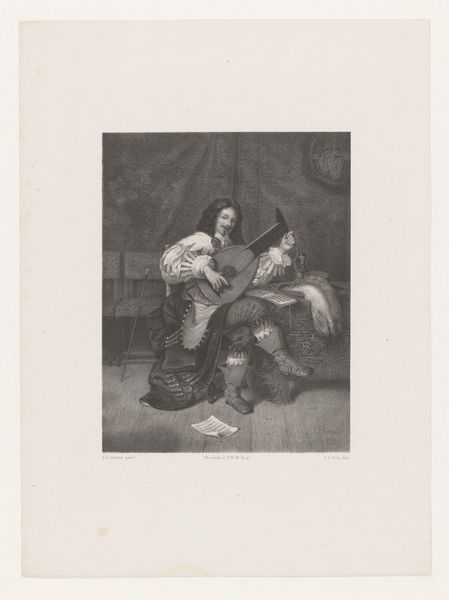
print, etching, engraving
#
print photography
#
medieval
# print
#
etching
#
history-painting
#
engraving
Dimensions: height 240 mm, width 183 mm
Copyright: Rijks Museum: Open Domain
Curator: Welcome. Today we are observing "The Coronation of Charlemagne," an engraving by Edgar Alfred Baes, likely created between 1847 and 1909. Editor: My immediate impression is one of hushed solemnity. The monochromatic palette, coupled with the intimate scale, creates an atmosphere of quiet importance. Curator: Indeed. Baes employs the etching and engraving techniques to produce intricate details and textures, carefully delineating light and shadow to articulate form. Consider the formal construction; the figure of the Bishop to the left is monumental, yet counterbalanced on the right by the clustered figures. Editor: And those figures—they seem almost mournful or anxious. Is it merely the artist's style or does that imagery carry symbolic meaning about this historical moment, particularly about power and faith? The figure of Charlemagne almost shrinks under the Bishop’s size and authority. Curator: The artist is certainly drawing upon centuries of visual traditions around investiture and authority. Note how Charlemagne is visually submitted through his kneeling posture, yet the architectural arches above might act as a sort of crown of authority to rebalance that dynamic. The artist may use visual tension in light and spatial position as a means of representing shifting power. Editor: That's fascinating. The arches could represent not just power, but also the Church’s power itself and the implied blessing from on high, the divine authority given by the Church. This might underscore the idea of sacred kingship but also potential instability if God's graces are removed. Curator: Observe the quality of the engraved lines themselves. The cross-hatching defines space but also describes surface. It’s not simply representational; it constructs a certain reality effect through light. We must consider how his line becomes form and meaning, an argument unto itself about what reality and history consists of. Editor: You are correct; there is indeed a fascinating interplay here. And that visual language adds another layer to consider as it presents to the viewer its argument about historical narrative and religious continuity, which suggests cycles of cultural trauma and renewal as the lines themselves give structure to history. Curator: Precisely. By examining how visual and formal tensions convey meaning in such artworks, we can better understand the nature of belief itself and the human quest to structure knowledge, emotion, and reality through visual means. Editor: A moment of coronation but also one where visual dynamics subtly represent historical contingency, if we only attune our eyes to these signs and arrangements.
Comments
No comments
Be the first to comment and join the conversation on the ultimate creative platform.
